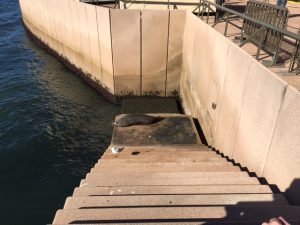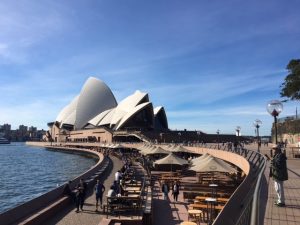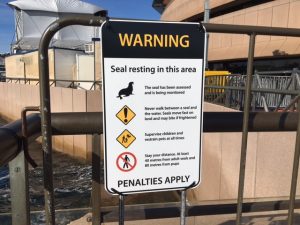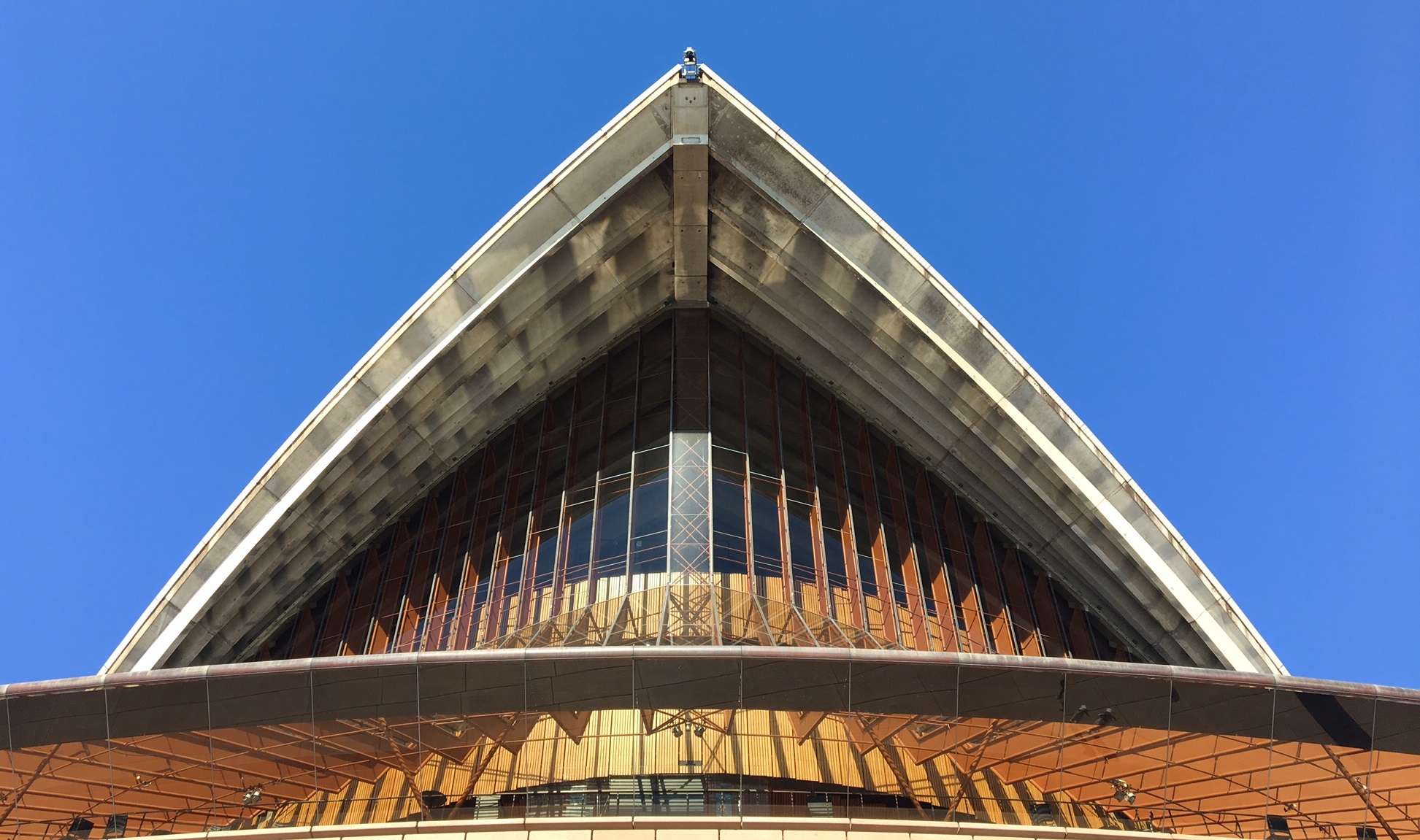The best seat in the house
For the fourth year running, a seal has taken up seasonal residence on the steps of the Sydney Opera House. I don’t mean on the main front steps – the ones Crowded House perform on – but the narrow ones leading down to the little landing stage at the north-west tip of the Opera House forecourt. Luckily these steps are rarely in use, being reserved for visiting VIPs who arrive by water. Perhaps the royal barge moored there when the Queen opened the joint in 1973. Had a seal been in residence back then, it might have been evicted to make way for her. Or maybe the Queen would have deferred to the seal and ascended to the forecourt by another route, thus giving it the status of royal seal.
But back to the currently resident animal, which has apparently been nicknamed ‘Benny’, presumably after the place at which it now lives, Bennelong Point. I’m no expert, but Benny looks happy and healthy, if a bit lethargic. Signs have been erected saying he’s ‘being monitored’, which makes it sound as if he’s under surveillance by the security services. More likely the people doing the monitoring are from Taronga Zoo, which is only a few hundred yards away across the harbour. If Benny listens carefully he might even be able to hear his captive compatriots barking their way through the zoo’s daily seal show.

Of all Sydney Harbour’s innumerable beaches, inlets, wharfs and jetties, why this seal should choose the Opera House as its home is a mystery. It’s tempting to indulge the possibility that it has deliberately done so, after careful consideration of its other options. This is fantasy, yet it’s impossible not to admit that a seal living at the Opera House is almost too good to be true. You couldn’t make it up. Or rather you could, but nobody would believe you – a point we’ll return to later.
One of the pleasures of working in Sydney’s CBD, as I do, is the chance to mingle at lunchtimes with the overseas tourists and witness their delight on seeing the Sydney Opera House for the first time. More recently, I’ve felt compelled to walk or take my lunchtime run around to Bennelong Point specifically to check on the seal. The only downside, particularly if I’m running, is the risk of losing an eye to a selfie stick. Most days Benny is in residence, lolling on the steps, waving a flipper at the tourists. He is the world’s laziest seal. Only once have I seen him actually in the water, but even then he was floating on his back, doing a few slow barrel rolls, rather than displaying any urge to go and catch his lunch.

The tourists love it, and why wouldn’t they. By the time they’ve stepped off a crowded ferry and walked the length of the forecourt to reach Benny’s steps they’ve marvelled at the Opera House’s sails and taken their photos and some of them might be reflecting, as I always do, that up close the Sydney Opera House is a pretty basic, if not pretty brutalist, structure. Apart from the soaring sails it mainly consists of brown concrete panels arranged at different angles (and even the ‘sails’ are disappointingly cream in colour, rather than the dazzling white of the brochures). Walls, steps, forecourt, seawall – all are the same unadorned brown concrete. So for the first-time visitor, the unexpected sight of a wild animal at the water’s edge might provide welcome relief from squinting into the sunshine bouncing off the acres of brown concrete.

But I still love the Sydney Opera House and have been lucky enough to see many memorable performances there. Many years ago during a Sydney Writers Festival, I attended an interview with British writer Ian McEwan, one of my all-time favourite authors. The hit movie version of his masterpiece novel Atonement was in the cinemas, and he was one of the biggest names of that year’s festival, if not of any year. I recall him explaining, without hiding his irritation, that the biggest downside in having an otherwise enviably huge readership was the many letters he received from pedantic readers pointing out minor inaccuracies in his novels. He quoted examples such as ‘Dear Mr McEwan, surely it’s incumbent on you to know that the Mercedes Benz SL400 wasn’t available with leather seating in the UK until 2005, over two years after your novel was set?’ or ‘Mr McEwan, you of all people should know that in the northern hemisphere, the constellation of Orion isn’t visible during the third week in July, as described in your novel…’.
His point was that fiction is no more than that, and if you expect otherwise then you have no business reading it. But of course, this is only true to a point, and that point hinges on whether a minor factual inaccuracy is material to the story. No-one, except the petrol-head pedant, will care if McEwan’s description of the interior of a 2003 German motor car is entirely accurate, unless the story somehow depends on it.
Fiction in which insignificant details aren’t scientifically accurate can still be great fiction, unless you’re a scientist or a pedant. But fiction in which things happen that are very unlikely to occur in real life is often unsuccessful, not because bizarre or improbable things don’t really happen, but because people subconsciously demand logic in their fiction, whereas real life is anything but. It’s an old storytelling maxim that you can create as bizarre a world as you like as long as your bizarre world has logical rules.
Fiction based on improbable coincidence, or on an all-too-neat scenario, or on a premise that is simply too good to be true is usually doomed. For example, a story about a seal that makes its home in the shadow of the Sydney Opera House and befriends the overseas tourists wouldn’t stand a chance, because it would never happen in real life – except it has.
